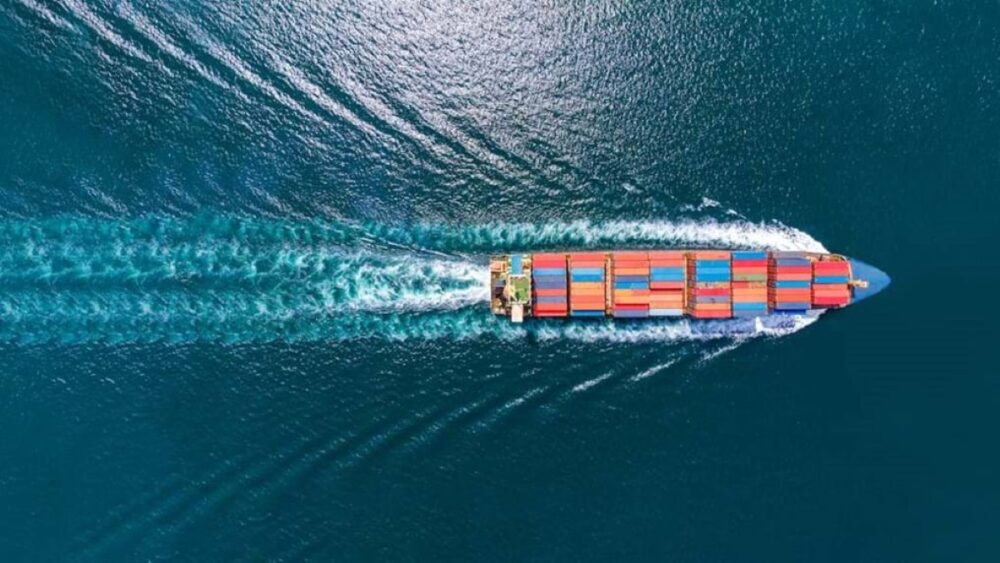~ Report on decarbonising maritime fuel should be considered in wider green energy strategy ~
The maritime industry contributes 2.8 per cent of global greenhouse gas emissions and this is expected to increase in the coming years. In 2021, UK shipping accounted for 7 million tonnes of fossil marine fuels – resulting in 23.6 million tonnes of CO2 emissions and accounting for nearly 20 per cent of the UK’s transport greenhouse gas emissions. Following the publication of Low-Carbon Maritime Fuelling, Nilay Shah, lead author and Fellow of the Institution of Chemical Engineers (IChemE), from Imperial College London, outlines how the report should be considered by policymakers as part of a wider clean energy strategy.
There is the potential for the UK to become a leader in decarbonising the maritime sector. The Clean Maritime Plan provides a clear vision of how the UK can achieve net-zero emissions by 2050, while back in 2022, the UK Government pledged £206 million for ‘greener and cleaner’ shipbuilding through the UK SHORE scheme[1]. This is just one example of changes that have begun to infrastructure, power and fuel in the maritime industry.
National Engineering Policy Centre report
The National Engineering Policy Centre (NEPC) in partnership with IChemE commissioned the Sargent Centre for Process Systems Engineering to investigate the various fuel options to achieve decarbonisation.
Low-Carbon Maritime Fuelling examines four clean fuel options: hydrogen, ammonia, methanol and synthetic hydrocarbons, providing useful evidence for policymakers ahead of the choices they need to make. The report’s job isn’t to make a recommendation as to which single fuel should be adopted but to outline potential benefits and drawbacks of each approach. What may happen, in practice, is a mixed approach.
As things stand, there’s no obvious option as each fuel type comes with trade-offs at some stage in the chain, whether that’s downstream costs, costs for modifications to existing storage facilities, or the need for the creation of entirely new vessels.
The report provides insight into the economics of each fuel option and other important factors such as infrastructure planning and which parts of the country certain fuel types can be suited to. For example, although there is demand for maritime fuel in the south of England, wind resources are further north which may require considerable investment in transport and electricity.
Policymakers may be attracted to ammonia because of its low-cost and the existing supply chain infrastructure; but you have to consider its poisonous nature, the investments required in storage and changes to ships’ combustion systems. Methanol is easy to transport and has similar properties to conventional maritime fuels and would require limited infrastructure development, but it does have additional fire and human health risks compared to currently fuels. Synthetic hydrocarbons may be seen as the closest ‘safe’ swap but require a higher amount of a renewable electricity than the other options. Despite synthetic hydrocarbons’ ability to use existing infrastructure, its use may result in higher costs than current fossil fuels incur today. In addition, while hydrogen is viable in terms of production, the cost of developing new ships and infrastructure is considerable.

Regional and strategic considerations
Though there are costs attached to decarbonisation, projects like SHAPE UK in Portsmouth are taking a regional approach by starting the development of a green hydrogen energy system within the port. The project reduces emissions in port operations by transitioning to hydrogen in internal combustion engines.
It is important to consider maritime fuel within the wider green energy strategy in the UK. For example, for all the advantages that synthetic hydrocarbons appear to have with their compatibility within the current infrastructure, they require more electricity than other fuel options.
Policymakers therefore need to consider the impact this would have on other sectors that would require high volumes of electricity. There is an increasing popularity in electric vehicles, while the current government is currently running a campaign to fit heat pumps into people’s homes in a bid to save on fuel bills.
A possible synergy the UK maritime sector can take advantage of is the offshore winds that are close to the ports. Considering the needs of many sectors requires a strategic approach and investment in renewable energy infrastructure.
All decarbonisation pathways have their benefits and drawbacks and work such as Low-Carbon Maritime Fuelling has a key role to play in informing a wider strategic approach to renewable energy. To read the full report, visit the National Engineering Policy Centre’s website.
[1] https://www.gov.uk/government/news/dft-launches-uk-shore-to-take-maritime-back-to-the-future-with-green-investment








